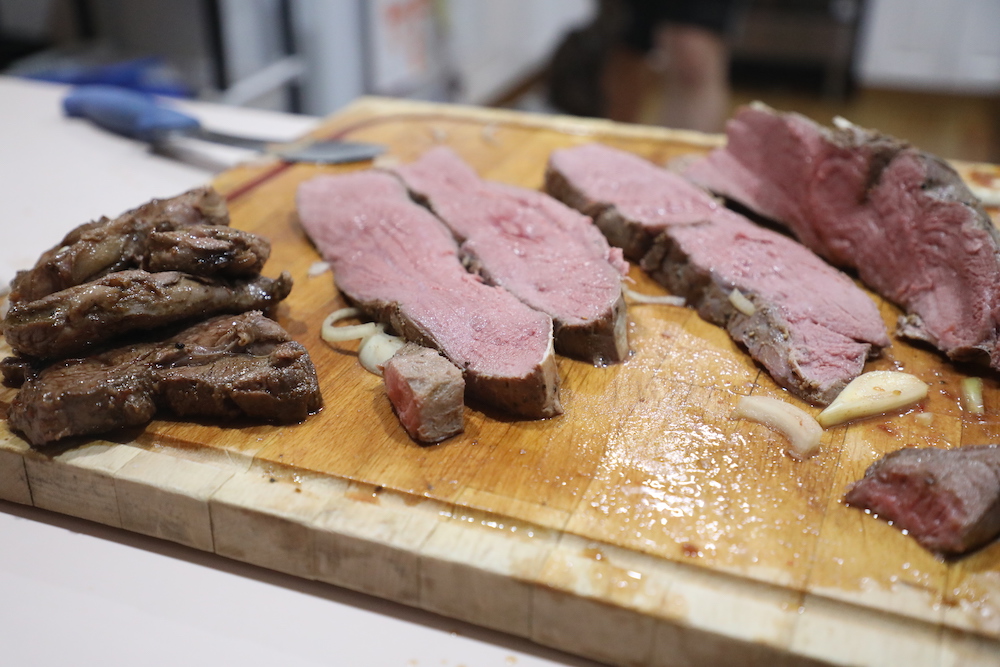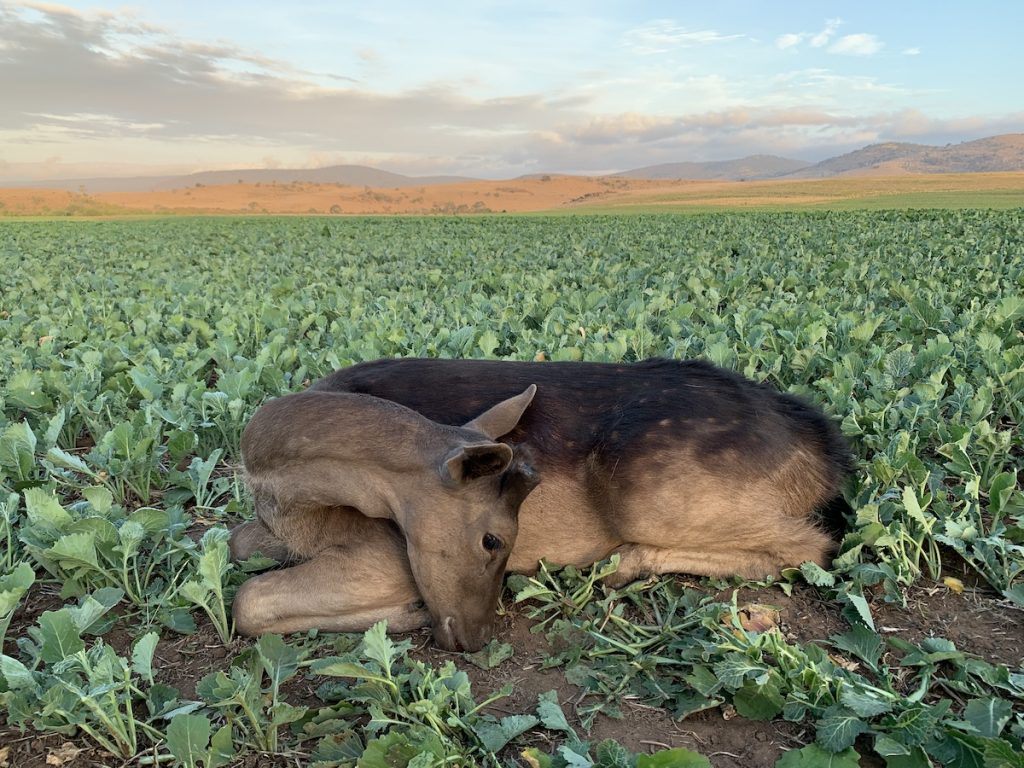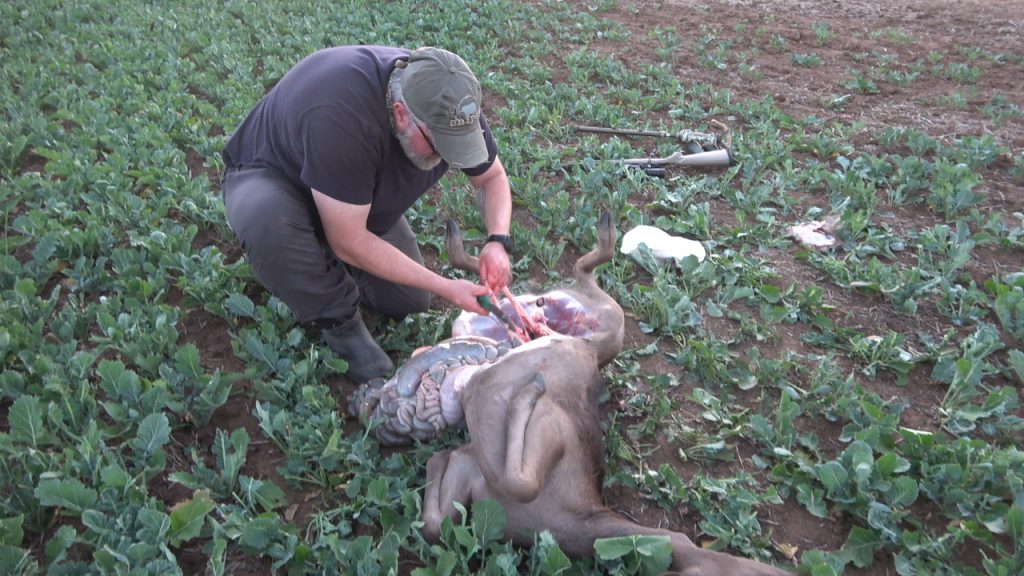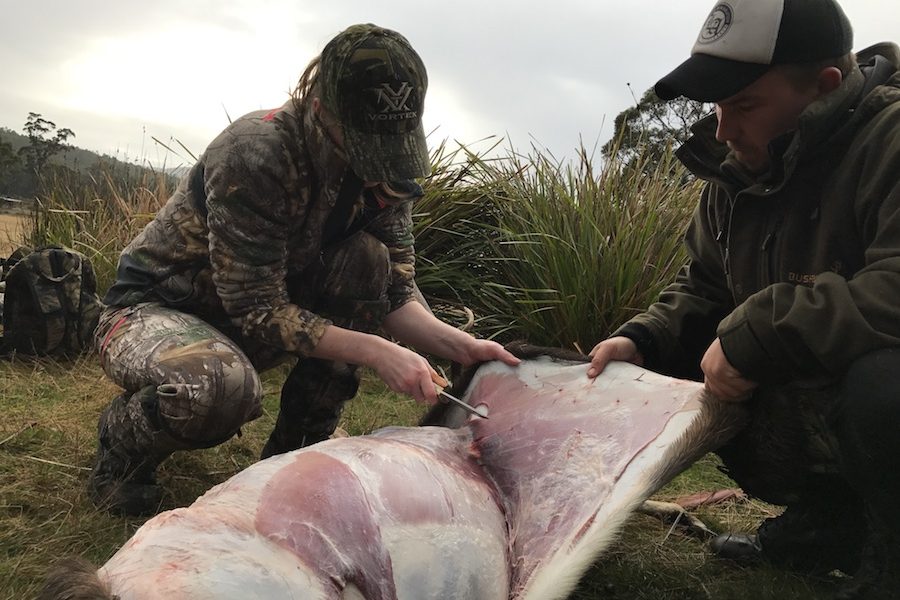Have you ever wondered why venison tastes bad? Do you find the meat too tough or the flavour gamey? Do your meals come out dry and inedible? Any meat can be ruined by bad handling, even high quality wagyu beef. More importantly, most deer meat can taste amazing with the proper handling. After all, wild venison didn’t earn its reputation as a highly prized table meat by tasting bad! In this article, we’ll look at the 8 biggest reasons why deer meat tastes bad.
I spent my early years working in abattoirs and meat works, so apply much of the knowledge I learned from commercial meat processing to processing wild game. In commercial abattoirs, the kill to chill process (killing, gutting, removing hide, hocks, head and internal organs and getting the carcass into the cool room) for each lamb is between 5 and 8 minutes and between 10 and 15 minutes for beef.
This is a highly mechanised and clinical process that involves many people working together. Speed, efficiency and cleanliness are paramount in this process.
Nobody expects hunters to be able to replicate this in the field, yet we still expect wild game to at least taste similar to the meat we buy from the supermarket or butcher. However, if we want meat of comparable quality, then our goal has to be to at least emulate some of the speed, efficiency and cleanliness of the commercial process.
 I want to share some of my knowledge and experience of that process to help you consistently harvest high quality wild game meat that you’d be proud to serve to your family and friends.
I want to share some of my knowledge and experience of that process to help you consistently harvest high quality wild game meat that you’d be proud to serve to your family and friends.
NOTE: While I refer mainly to deer in this article, the same principles apply to almost any wild game meats and even livestock you have raised and butchered yourself.
1. Poor animal choice
Almost all deer can be eaten but some deer are better for meat than others. It all comes down to what your ultimate goal of hunting is.
If your main goal is meat for the freezer, a younger animal is going to taste better than an older rutting male or a doe who has wasted all her calories feeding fawns. If you want a good quality meat animal, you also need to consider what the animal has been eating. When it comes to wild game, they really are what they eat! If deer are feeding on crops or grains, the meat will taste milder than deer who have spent most of their lives browsing forests or sparse shrubs for food. I recently shot a young fallow buck who had been feasting on crop lands. He was fat, tender and had the most delicious, buttery fat encasing his muscles. On the flip side, I have also shot many old rutting stags, and while their meat is still edible, it wasn’t even in the same ballpark as that tender, young buck!

In those times, I am hunting for antlers first, and the meat is secondary. I need to accept that the meat might be slightly tougher but with proper handling and ageing, it will still be perfectly edible and doesn’t need to be relegated to mince-only.
2. Poor shot placement
There are a number of ethical reasons you should aim for the fastest kill shot possible. Most of these reasons benefit the animal and give it the respectful death it deserves. But there are also benefits to your palate in making a quick, ethical kill.
If your shot placement is poor and the animal runs, adrenaline and lactic acid builds up in its muscles and can affect the taste of the meat.
Similarly, hitting the animal in the stomach can contaminate the meat with entrails, gut contents and gastric juices. While it is possible to save the meat, very few hunters are willing to take the risk – or endure the bad taste!
A head shot often results in a fast death, and preserves all the edible meat. But head shots are considered risky, and therefore, not really ethical unless you are in very close range. Plus, a head shot ruins any chance to retain the head or antlers for a trophy.
One of the best ways I have found to both ensure a quick kill and preserve as much meat as possible is to aim for the heart or lungs. Hitting a vital organ usually results in a quick death, though having said that, I have hit a buck straight in the heart and still had him run. If the animal is particularly large, I will often aim for the front shoulder, as this shatters bone and breaks the leg, making it a lot harder for the animal to run too far. But hitting the shoulder does destroy a lot of usable meat, so I tend to save this for big game like buffalo, sambar deer or antelope.
3. Not cooling the carcass fast enough
Remember the kill to chill times I mentioned for commercial abattoirs? This isn’t just done to push more animals through the chain and increase profits. It is a critical element in food safety. The internal body temperature of a deer is around 38.5 degrees Celsius. In food safety, this is known as the danger zone, the optimum temperature for bacteria to thrive. At this temperature, bacteria doubles in growth every twenty minutes. The longer the carcass stays warm, the more bacteria grows, and the more the meat will be tainted.
In the absence of a commercial chiller, there are some simple techniques you can use in the field to drop the body temperature and cool the carcass as quickly as possible:
- Field dress as soon as possible after the kill. Many hunters grapple with the question of whether to gut or not. Some hunters choose to butcher the whole carcass in the field without gutting the animal (known as the gutless method). Others choose to transport the whole animal back to camp and gut and process it later. My preference is to gut immediately. This has several benefits. The meat cools more quickly. It is also easier – and safer – to gut an animal while it is still warm. Decomposition starts the minute the animal dies. Internal bacteria converts to gas in the stomach, which causes the intestines to expand and bloat. The warmer the weather, the faster the animal bloats. And once an animal bloats, your risk of piercing the intestines and contaminating the meat increases.

- Bleed the animal. Like many things, hunters are divided on whether to bleed an animal or not. Some swear there’s no need. Others treat it like a religious ritual. For me, it’s far more simple. Blood is warm and as we already discussed, warmth increases bacteria. Therefore, I treat bleeding with the same necessity that I do gutting and do it immediately. The gutting process itself removes blood in the chest cavity but there’s also an artery that runs along the spine. After removing the gut, I split this artery open and turn the deer back onto its stomach. If I’m on a hill, the natural slope helps the blood flow downhill. If the ground is flat, I prop the front half of the deer on a log or rock and create an angle to help with blood flow. I leave it to drain while I clean my hands and knife. There is another benefit to removing the blood. As blood cools, it coagulates, sticking to the meat and making it harder to clean. This can give meat a strong, bloody flavour that some find unpleasant.
- Airflow and ice – once back at camp (or home), I don’t just leave the deer laying in the back of the truck, or on the ground. I find a tree and hang the deer by its back legs. I have a gambrel to split the back legs open, but a rope itself will do. There are a number of reasons I do this. For starters, it gets air flowing around the carcass, again helping to drop that internal body temperature and halt any bacteria growth. It is also much easier to skin and butcher the deer from this position. If you can’t hang the carcass, or the weather is too warm, quarter the deer and get the meat on ice as quickly as possible. Don’t forget to open the drain on your esky so any melting ice can drain away or you’ll end up with your meat marinating in dirty, bloody water!
4. Leaving the skin on
 This is one of those contentious issues hunters rarely agree on. Some hunters leave the skin on as long as possible, swearing that ageing a deer in its skin is the best option. Others get the skin off as soon as possible. While there is no wrong method, I definitely prefer to get the hide off sooner rather than later, preferring a clean game bag to protect the meat than a dirty hide.
This is one of those contentious issues hunters rarely agree on. Some hunters leave the skin on as long as possible, swearing that ageing a deer in its skin is the best option. Others get the skin off as soon as possible. While there is no wrong method, I definitely prefer to get the hide off sooner rather than later, preferring a clean game bag to protect the meat than a dirty hide.
For starters, it is a lot easier to skin a deer while it is still warm. The cooler the carcass gets, the tougher the skinning process becomes.
Getting the skin off gets air flowing over the meat, which is yet another way to get that carcass cooling as quickly as possible.
But probably the most important reason I get the skin off as soon as I can is to avoid all the contaminates present on the hide.
Deer have some pretty questionable hygiene habits, especially during the rut. Not only do they roll in mud and rub themselves with musk from their scent glands, they also have a nasty tendency to pee all over themselves! It doesn’t take very long for the scents and smells present on the hide to begin leeching into the meat and affecting the flavour. And I don’t know about you, but I’m not really fond of urine-flavoured meat! The hide is also rife with bacteria and germs, which all come in contact with the meat the longer you leave it on.
Whenever possible, I try to get the hide off in the first hour or two, but there are always times when that simply isn’t possible. If I have to transport an animal with its hide on, I try to never leave the hide on longer than 24 – 36 hours at the most. Any longer than that, and you will notice a stronger tasting meat.











































